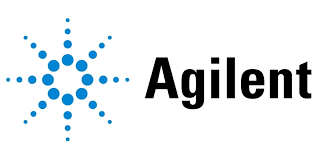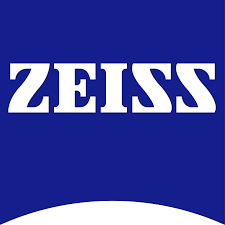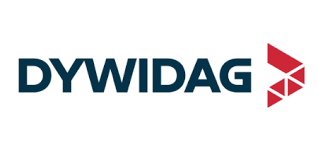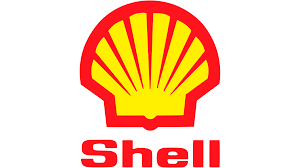Lysosomal Storage Disease Treatment Market Report
Published Date: March 16, 2024 | Report Code: lysosomal-storage-disease-treatment
Lysosomal Storage Disease Treatment Market Size, Share, Industry Trends and Forecast to 2033
This report provides an in-depth analysis of the Lysosomal Storage Disease Treatment market, covering current trends, market size, segmentation, and future forecasts from 2023 to 2033.
| Metric | Value |
|---|---|
| Study Period | 2023 - 2033 |
| 2023 Market Size | $3.20 Billion |
| CAGR (2023-2033) | 6.5% |
| 2033 Market Size | $6.11 Billion |
| Top Companies | Sanofi Genzyme, Shire (now part of Takeda), Pfizer , Janssen Pharmaceuticals, Amicus Therapeutics |
| Last Modified Date | 02 June 2025 |
Lysosomal Storage Disease Treatment Market Report (2023 - 2033)
Lysosomal Storage Disease Treatment Market Overview
Customize Lysosomal Storage Disease Treatment Market Report market research report
- ✔ Get in-depth analysis of Lysosomal Storage Disease Treatment market size, growth, and forecasts.
- ✔ Understand Lysosomal Storage Disease Treatment's regional dynamics and industry-specific trends.
- ✔ Identify potential applications, end-user demand, and growth segments in Lysosomal Storage Disease Treatment
What is the Market Size & CAGR of Lysosomal Storage Disease Treatment market in 2023?
Lysosomal Storage Disease Treatment Industry Analysis
Lysosomal Storage Disease Treatment Market Segmentation and Scope
Tell us your focus area and get a customized research report.
Lysosomal Storage Disease Treatment Market Analysis Report by Region
Europe Lysosomal Storage Disease Treatment Market Report:
Europe demonstrates a strong market presence, with an increase from USD 0.80 billion in 2023 to USD 1.53 billion by 2033. The continent benefits from advanced healthcare systems, increasing R&D activities, and strong platforms for patient advocacy, enhancing the availability of effective treatments.Asia Pacific Lysosomal Storage Disease Treatment Market Report:
The Asia Pacific region presents significant growth opportunities, with its market projected to grow from USD 0.64 billion in 2023 to USD 1.22 billion by 2033. Increased healthcare spending, rising disease prevalence, and improving diagnostic capabilities contribute to this growth, alongside expanding access to advanced therapies.North America Lysosomal Storage Disease Treatment Market Report:
The North American market, valued at USD 1.16 billion in 2023, is expected to reach USD 2.22 billion by 2033. This growth is primarily fueled by robust healthcare infrastructure, ongoing research funding, and a high prevalence of LSDs, alongside supportive regulatory frameworks.South America Lysosomal Storage Disease Treatment Market Report:
In South America, the market is anticipated to grow from USD 0.23 billion in 2023 to USD 0.44 billion by 2033. Factors such as increasing awareness of LSDs, enhancing healthcare systems, and government initiatives to improve drug access are driving market development in the region.Middle East & Africa Lysosomal Storage Disease Treatment Market Report:
The Middle East and Africa region's market is estimated to grow from USD 0.37 billion in 2023 to USD 0.70 billion by 2033 due to efforts to strengthen healthcare systems, improve disease diagnostics, and enhance treatment accessibility in emerging markets.Tell us your focus area and get a customized research report.
Lysosomal Storage Disease Treatment Market Analysis By Therapy Type
Global Lysosomal Storage Disease Treatment Market, By Therapy Type Market Analysis (2024 - 2033)
In 2023, the Enzyme Replacement Therapy (ERT) segment accounts for USD 2.08 billion and remains dominant, expected to reach USD 3.97 billion by 2033. This segment represents 64.96% of the market in both years, reflecting the established efficacy of ERT in treating LSDs. The Substrate Reduction Therapy (SRT) segment also shows promising growth, growing from USD 0.66 billion to USD 1.25 billion, holding 20.55% market share throughout the forecast.
Lysosomal Storage Disease Treatment Market Analysis By Disease Type
Global Lysosomal Storage Disease Treatment Market, By Disease Type Market Analysis (2024 - 2033)
Gaucher Disease leads the market in 2023 with a size of USD 1.46 billion and is projected to grow to USD 2.79 billion by 2033, holding 45.66% of the market. Fabry Disease follows with significant growth from USD 0.72 billion to USD 1.38 billion, representing 22.65% market share. Other diseases like Hurler Syndrome and Tay-Sachs Disease exhibit steady growth as well, indicating broader treatment needs across various LSDs.
Lysosomal Storage Disease Treatment Market Analysis By Route Of Administration
Global Lysosomal Storage Disease Treatment Market, By Route of Administration Market Analysis (2024 - 2033)
The intravenous route dominates the administration segment, with a size of USD 2.08 billion and a share of 64.96% in 2023. This segment is expected to grow to USD 3.97 billion by 2033. Subcutaneous administration also shows potential, growing from USD 0.66 billion to USD 1.25 billion, maintaining a 20.55% share. Oral administration, although smaller, is expected to reach USD 0.88 billion by 2033, representing patient-centric trends towards less invasive therapy.
Lysosomal Storage Disease Treatment Market Analysis By End User
Global Lysosomal Storage Disease Treatment Market, By End-User Market Analysis (2024 - 2033)
Hospitals are the primary end-users, holding a significant market size of USD 2.08 billion in 2023 (64.96% share) and projected to grow to USD 3.97 billion by 2033. Specialty clinics are also noteworthy, growing steadily from USD 0.66 billion to USD 1.25 billion (20.55% share). Home care settings, despite being smaller, show growing relevance in contributing to overall care and treatment accessibility.
Lysosomal Storage Disease Treatment Market Analysis By Distribution Channel
Global Lysosomal Storage Disease Treatment Market, By Distribution Channel Market Analysis (2024 - 2033)
Hospital pharmacies lead the distribution channel segment, valued at USD 2.08 billion and maintaining a 64.96% market share in 2023, expected to rise to USD 3.97 billion by 2033. Specialty and retail pharmacies also play crucial roles, with expected growth reflecting the increasing accessibility and distribution of LSD therapeutics as awareness rises.
Lysosomal Storage Disease Treatment Market Trends and Future Forecast
Tell us your focus area and get a customized research report.
Global Market Leaders and Top Companies in Lysosomal Storage Disease Treatment Industry
Sanofi Genzyme:
Sanofi Genzyme is a leading biopharmaceutical company recognized for its pioneering work in LSD treatments, especially for Gaucher and Fabry diseases, through innovative enzyme replacement therapies.Shire (now part of Takeda):
Shire has been instrumental in developing therapies for rare diseases, particularly in LSDs, and is known for its advancements in enzyme replacement and substrate reduction therapies.Pfizer :
Pfizer is a major player in the pharmaceutical sector, contributing to the LSD treatment landscape with extensive R&D programs aimed at enhancing therapeutic options and making treatments more accessible.Janssen Pharmaceuticals:
Part of Johnson & Johnson, Janssen Pharmaceuticals focuses on developing innovative treatments for complex diseases, including LSDs, driving advances in clinical developments and patient care.Amicus Therapeutics:
Amicus Therapeutics focuses on developing therapies for rare genetic diseases, including LSDs, utilizing cutting-edge technology to innovate treatment options and improve patient outcomes.We're grateful to work with incredible clients.









Related Industries
FAQs
What is the market size of lysosomal Storage Disease Treatment?
The lysosomal storage disease treatment market is currently valued at approximately $3.2 billion in 2023, with a projected CAGR of 6.5%. This indicates strong growth potential over the next decade, positioning the market for expansion and increased investment.
What are the key market players or companies in this lysosomal Storage Disease Treatment industry?
Key players in the lysosomal storage disease treatment industry include Sanofi Genzyme, Shire (now part of Takeda), Amicus Therapeutics, and Vertex Pharmaceuticals. These companies lead in research, development, and commercialization of treatments, improving patient outcomes in this specialty area.
What are the primary factors driving the growth in the lysosomal storage disease treatment industry?
Growth in the lysosomal storage disease treatment market is primarily driven by increased awareness and diagnoses of these rare diseases, advancements in biotechnology, and the rising availability of enzyme replacement therapies and substrate reduction therapies that improve patient health outcomes.
Which region is the fastest Growing in the lysosomal Storage Disease Treatment?
The Asia-Pacific region is forecasted to be the fastest-growing market for lysosomal storage disease treatments, expanding from $0.64 billion in 2023 to $1.22 billion by 2033. This growth is fueled by increasing healthcare expenditure and advancements in medical research.
Does ConsaInsights provide customized market report data for the lysosomal Storage Disease Treatment industry?
Yes, ConsaInsights offers customized market report data for the lysosomal storage disease treatment industry. Clients can request insights tailored to their specific needs, ensuring they receive relevant market analysis for strategic decision-making.
What deliverables can I expect from this lysosomal Storage Disease Treatment market research project?
Clients can expect comprehensive deliverables including market size analysis, growth forecasts, competitive landscape assessments, and detailed segment breakdowns. The final report will facilitate informed decision-making and strategy development for stakeholders in the industry.
What are the market trends of lysosomal Storage Disease Treatment?
Current market trends in lysosomal storage disease treatment include a shift towards personalized medicine, increased adoption of gene therapies, and growing collaborations among pharmaceutical companies. These trends underline the evolving landscape of treatment options and drive continuous innovation.
